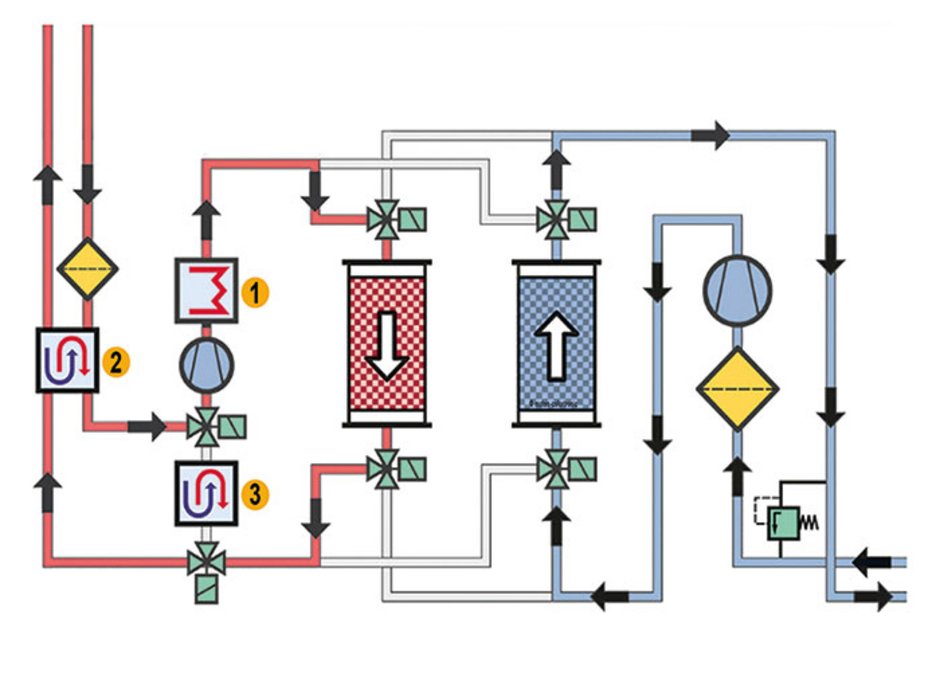50 - What is the purpose of molecular sieves?

Now that we have dealt with the basics of dosing, drying and conveying, we will turn to more specific aspects of drying plastics in the next few issues. Molecular sieves are natural or synthetic zeolites that have large adsorption capacities. An important demand of the molecular sieve is that the water intake needs to be reversible. Once the molecular sieve has reached its saturation point, it must be regenerated. In order to do this, the dryer switches the bed into a special regeneration cycle, which is an open process. The molecular sieve (desiccant) is then “rinsed” with very hot air (ca. 250 – 300 °C). This hot air that comes from a regeneration heater heats the water in the pores of the molecular sieve above boiling point and transfers the moisture out of the bed.
In order to finally restore the entire adsorption capacity, the molecular sieve needs to be cooled down. The lower the temperature of the molecular sieve is, the better it is able to take on water. If a hot molecular sieve were to be switched into the drying cycle, there would be the danger that the plastic that is to be dried would receive thermal damage.
The molecular sieve is usually cooled using air. Simple systems often use environmental air. However, in this case the molecular sieve can already adsorb moisture, resulting in greater energy consumption. At very high levels of air humidity the molecular sieve may no longer be able to adsorb sufficient amounts of water to achieve the necessary dew point. This is why it is better to cool the molecular sieve in a closed cycle with the help of an integrated cooler.
We will introduce the different methods of regeneration in the next issue of Mo’s Corner.
You want to see a molecular sieve within a drying system? Visit www.motan.com for more!
